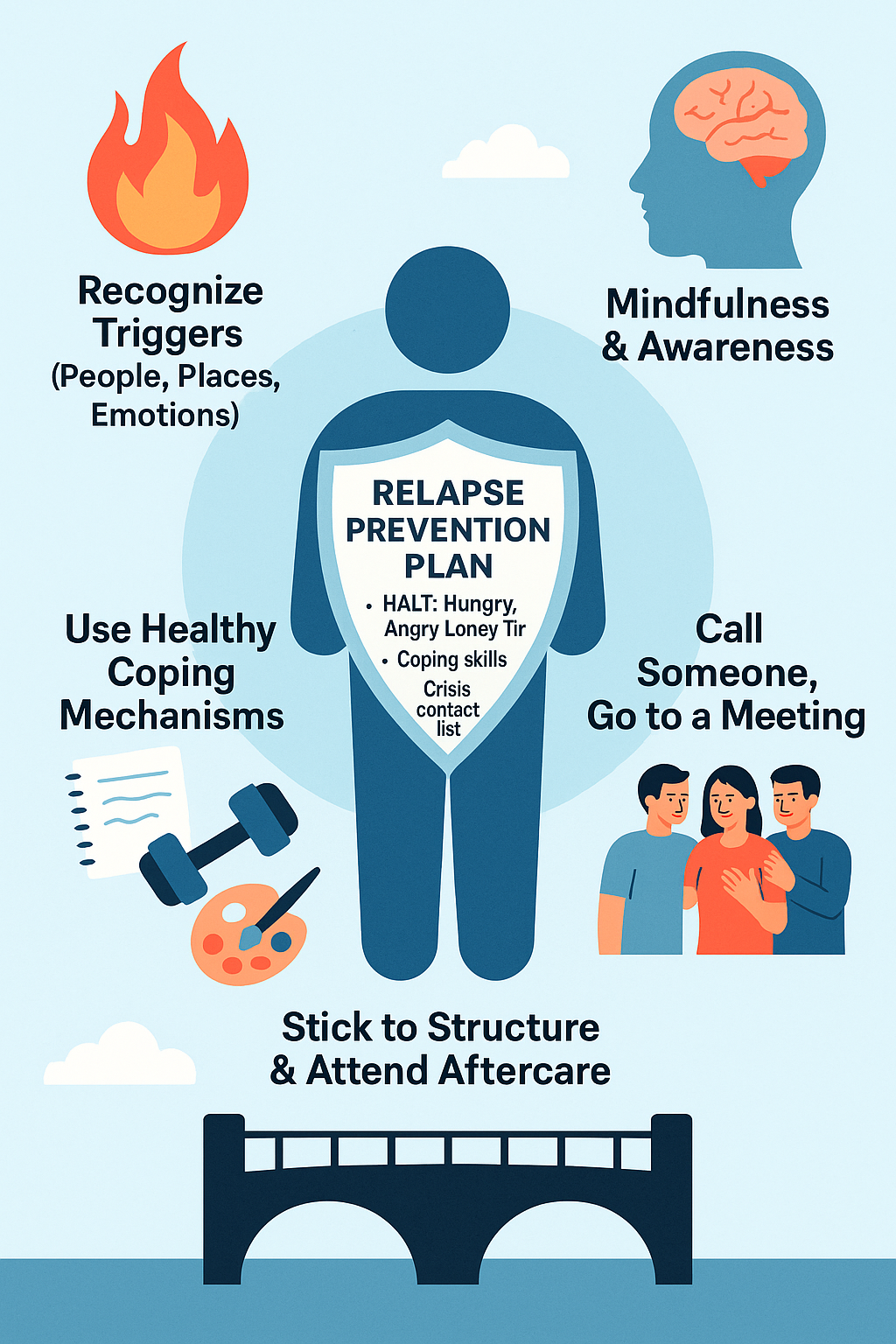Preventing relapse is a vital part of long-term recovery from drug and alcohol addiction. Recovery is not a single event—it’s a lifelong journey that requires support, structure, and self-awareness. A powerful way to understand this process is by imagining a person surrounded by multiple protective layers, each representing a strategy to prevent relapse.
1. Recognizing and Managing Triggers
Triggers are people, places, emotions, or situations that can create the urge to use substances again. Common triggers include stress, loneliness, certain social settings, or even celebrations. Visualizing these as flames or warning signs helps us remember how dangerous and unpredictable they can be.
Prevention Tip:
Identify personal triggers early in recovery.
Avoid high-risk situations whenever possible.
Practice the “STOP” method: Stop, Take a breath, Observe, Proceed mindfully
2. Developing Mindfulness and Self-Awareness
Mindfulness means being fully present and aware of thoughts and emotions without judgment. It helps people pause and reflect rather than react impulsively when faced with cravings or emotional discomfort.
Prevention Tip:
Use techniques like meditation, deep breathing, and grounding exercises.
Keep a daily journal to track feelings and progress.
Learn to recognize warning signs of emotional distress.
3. Using Healthy Coping Tools
In recovery, it’s essential to replace substance use with healthy alternatives to manage stress, boredom, or anxiety. These are the tools that help restore balance and reduce the risk of relapse.
Prevention Tip:
Engage in physical activity like walking or yoga.
Explore hobbies such as art, music, reading, or gardening.
Practice positive self-talk and affirmations.
4. Building a Strong Support Network
Recovery cannot be sustained alone. A strong support system offers emotional backup, accountability, and connection during challenging times.
Prevention Tip:
Stay connected with family, trusted friends, or a sponsor.
Attend support group meetings (e.g., AA, NA, SMART Recovery).
Reach out for help when cravings or emotional challenges arise.
5. Establishing a Structured Routine and Aftercare
Routine creates stability. Aftercare programs such as outpatient therapy or sober living environments provide continued guidance after treatment ends.
Prevention Tip:
Plan your day: schedule meals, sleep, work, and relaxation.
Join ongoing therapy or relapse prevention groups.
Set short-term and long-term recovery goals.
6. Creating a Personal Relapse Prevention Plan
At the heart of relapse prevention is having a clear, written plan. Think of it as a shield—something to turn to when stress or temptation strikes.
Key Elements of a Plan:
List of triggers and coping strategies
Emergency contacts (sponsor, counselor, family)
Daily routine and wellness practices
Use the HALT method: Ask yourself if you are Hungry, Angry, Lonely, or Tired—common relapse triggers.
Conclusion
Relapse is not a sign of failure—it’s a signal that something in the recovery system needs attention. By surrounding oneself with support, building self-awareness, using healthy coping tools, and following a structured routine, individuals can build a strong defense against relapse.
The journey to recovery is deeply human. It is built one day at a time, one choice at a time—with the right tools and support, long-term healing is not only possible but achievable.


Leave a Reply